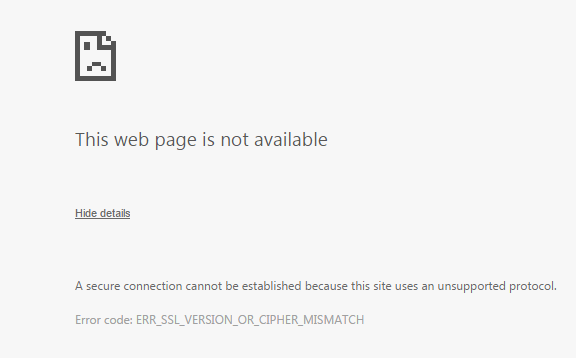Don’t install the latest release of Google Chrome (41), released on Thursday (Friday UK time). They’ve messed up. Twice.
Broken SSL when talking to routers etc.
The first problem comes when accessing the web interface on a device such as a router over SSL (encrypted). Unfortunately, because the software in theses is embedded, the security certificate it uses isn’t going to match the name of the device you use to access it. This would be impossible – when it leaves the factory it hasn’t had its IP address assigned on your site; never mind the DNS entry. Previously browsers have allowed you to ignore this mis-match; the encryption works as long as you’re comfortable that you’re really talking what you think you are using some other check, and once the exception has been stored, this should be the end of the matter.
But not with Chrome release 41. Now it will show you the screen below:
If you ask for more details it doesn’t really give you much:
A secure connection cannot be established because this site uses an unsupported protocol.
Error code: ERR_SSL_VERSION_OR_CIPHER_MISMATCH
More adverts too – and a malware backdoor
Update 2015-03-23
On further investigation, the updated Chrome isn’t doing a DNS lookup to find the Google ad-server. I’m unsure whether this is because it somehow cached the DNS results internally or whether its hard-wired. It certainly wasn’t using the system cache, but I know Chrome has kept its own cache in the past. If it is from an internal cache, the mechanism used to get the IP address in there in the first place is a mystery, however Google’s ad servers change from time to time and it’s not impossible that the perimeter firewall simply hadn’t kept up and allowed some through.
My next research will be looking more closely at the DNS traffic.


